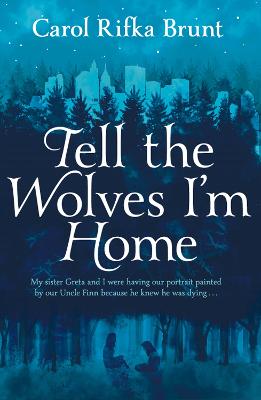Tell the Wolves I'm Home

As seen:
By Carol Rifka Brunt
avg rating
1 review
There’s only one person who has ever truly understood fourteen-year-old June Elbus, and that’s her uncle, the renowned painter, Finn Weiss. Shy at school and distant from her once inseparable older sister, June can only be herself in Finn’s company; he is her godfather, confidant, and best friend. So when he dies far too young of a mysterious illness that June’s mother can barely bring herself to discuss, June’s world is turned upside down. At the funeral, she notices a strange man lingering just beyond the crowd, and a few days later, June receives a package in the mail. Inside is a beautiful teapot she recognizes from Finn’s apartment, and a note from Toby, the stranger, asking for an opportunity to meet. As the two begin to spend time together, June realises she’s not the only one who misses Finn, and if she can bring herself to trust this unexpected friend, he might just be the one she needs the most. Tell the Wolves I’m Home is a tender story of love lost and found, an unforgettable portrait of the way compassion can make us whole again.
TweetReviews
St Just Monday Morning Reading Group 30h September 2019.
Tell the wolves I'm home. Carol Rifka Blunt.
We all felt that the book captured, as one of us put it, `the mind and hormones of a teenage girl’, and in that sense was effective. It also captured the sense of the 80s setting (for example, referring to `the AIDS’. However we had mixed feelings about it as a novel. Some of us found it an enjoyable read, others struggled to complete it (but did so out of loyalty to the group). We wondered why the author had chosen to write about teenagers. We suggested that it felt like a `teen novel’, although too lengthy for that.
Some said that there were too many story-lines, with some elements not being well-developed. For example, we found the relationship between Danni and Finn interesting but wanted more. One person commented that there was not much real story but `lots of writing’. It was suggested that the opening misled us as to the meaning of the picture which gives the book its title, and we had differing interpretations of this. We did think that the author used the picture cleverly in developing the plot.
Finally, it did lead us to reflect on our own teenage years. Some of us were reminded of how awful we had been!






